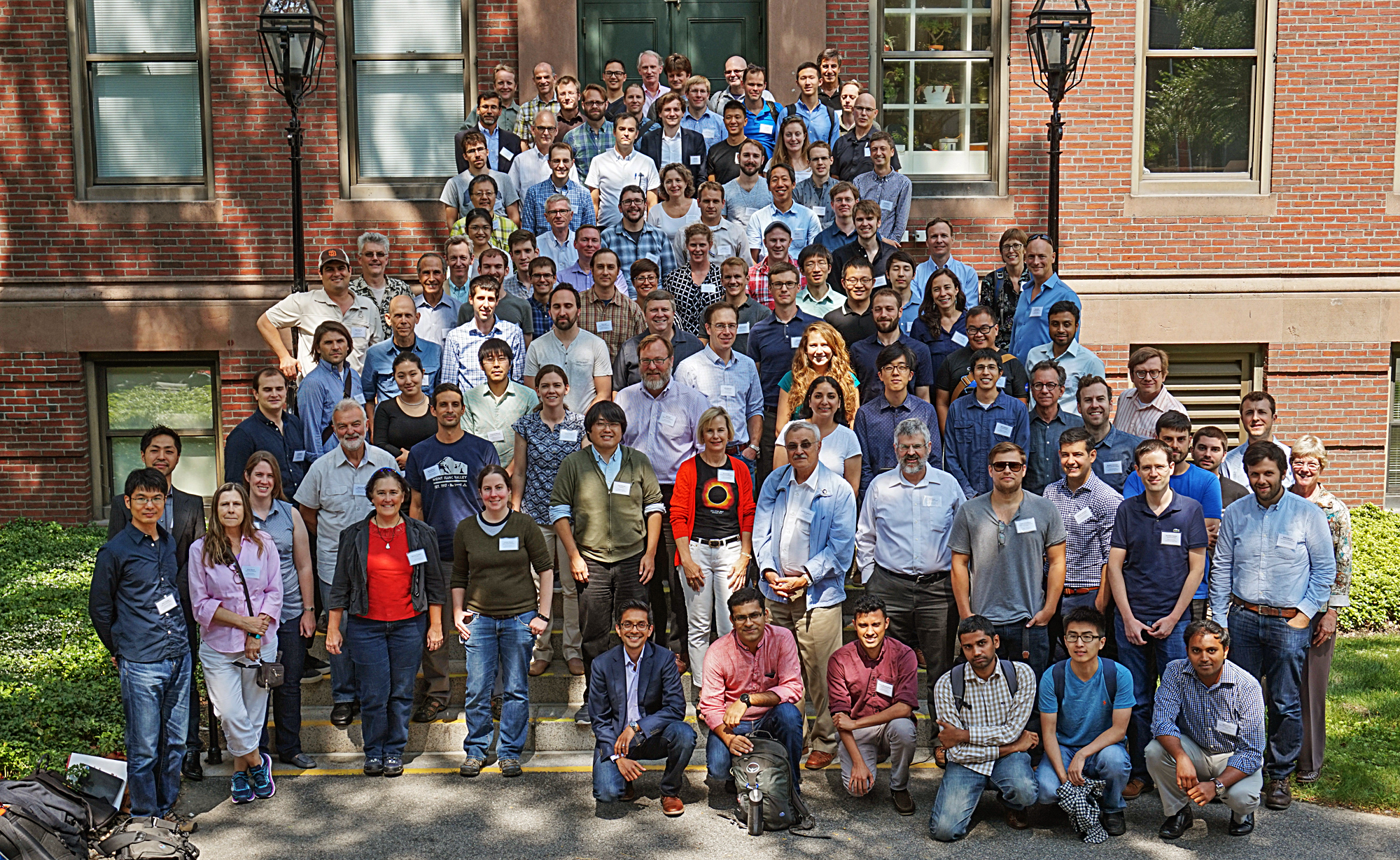| Home | Overview | Science | News | Events | Docs & Talks | Collaboration | CDT | Job Postings | CMB-S4 Wiki |
News
|
CMB-S4 News, 2017
CMB-S4 Concept Definition Task Force issues final report October 23, 2017 This report presents a concept for implementing a ground-based Cosmic Microwave Background Stage-4 experiment (CMB-S4) designed to tackle questions about fundamental physics from the earliest moments in the Universe through to the epoch of dark energy domination. CMB-S4 will search for in ation at one end of the energy scale, and for sub-eV particles at the other, including neutrinos and as-yet-undiscovered light relics. CMB-S4 data will trace out the behavior of gravity across cosmological distances and anchor our understanding of how structures form under the gravitational collapse of dark matter moderated by the in uence of baryons. These aims require CMB measurements with sensitivity, precision, and accuracy far beyond those obtained to date, roughly two orders of magnitude more sensitive than the summation of all measurements acquired so far, and an order of magnitude more sensitive than Stage-3 experiments. To address this challenge, the CMB community has come together to advocate a single comprehensive CMB-S4 experiment, which has been endorsed by the 2014 report of the Particle Physics Project Prioritization Panel (P5) Building for Discovery and the 2015 NAS/NRC report A Strategic Vision for NSF Investments in Antarctic and Southern Ocean Research.Learn more >> Collaboration Voting September 1, 2017 As agreed upon at the Aug 2017 Workshop, the Interim Collaboration Coordination Committee (ICCC) for the S4 will coordinate the activities of the Working Groups formed to work on collaboration bylaws and technical and science efforts. The ICCC will have 15 members. S4 registered voters will choose 7 members, and the remaining members will be appointed by the S4 Workshops Science Organizing Committee to ensure diversity on the ICCC, including career experience, institutional sizes, projects, locations of institutions, etc. The ICCC will elect its own chair, and other positions as needed (like deputy chair and secretary). The ICCC will disband once the governance bylaws are ratified.Learn more >> Harvard-2017: Collaboration Workshop August 28, 2017 Cosmology with CMB-S4 workshop at Harvard University, Aug. 24-25, 2017. The CMB-S4 Collaboration Workshop at Harvard (August 2017) will continue the series of open workshops for the CMB observational and theoretical community to define the 'Stage-4' ground-based cosmic microwave background (CMB) experiment. From the CMB-S4 homepage: ''[this experiment], consisting of dedicated telescopes equipped with highly sensitive superconducting cameras operating at the South Pole, the high Chilean Atacama plateau, and possibly northern hemisphere sites, will provide a dramatic leap forward in our understanding of the fundamental nature of space and time and the evolution of the Universe. CMB-S4 will be designed to cross critical thresholds in testing inflation, determining the number and masses of the neutrinos, constraining possible new light relic particles, providing precise constraints on the nature of dark energy, and testing general relativity on large scales.'' Topics of the workshop
CMB-S4 Technology Book, First Edition (arXiv:1706.02464) June 19, 2017 CMB-S4 is a proposed experiment to map the polarization of the Cosmic Microwave Background (CMB) to nearly the cosmic variance limit for the angular scales that are accessible from the ground. The science goals and capabilities of CMB-S4 in illuminating cosmic inflation, measuring the sum of neutrino masses, searching for relativistic relics in the early universe, characterizing dark energy and dark matter, and mapping the matter distribution in the universe have been described in the CMB-S4 Science Book. This Technology Book is a companion volume to the Science Book. The ambitious science goals of the proposed ''Stage-IV'' CMB-S4 will require a step forward in experimental capability from the current Stage-III experiments. To guide this process, the community summarized the current state of the technology and identify R&D efforts necessary to advance it for possible use in CMB-S4. The book focused on the technical challenges in four broad areas: Telescope Design; Receiver Optics; Focal-Plane Optical Coupling; and Focal-Plane Sensor and Readout.Learn more >> SLAC-2017 Collaboration Workshop March 1, 2017 SLAC-2017 continues a successful series of workshops bringing together the CMB community to plan a coordinated, stage-4 ground-based CMB experiment. Themes of this workshop include a particular focus on
Joint DOE and NSF Concept Definition Task Force has been formed January 6, 2017 The DOE and NSF Concept Definition Task Force (CDT) has been formed. It is a subpanel of the AAAC and is chaired by Dr. Charles Lawrence (JPL).Learn more >> |




